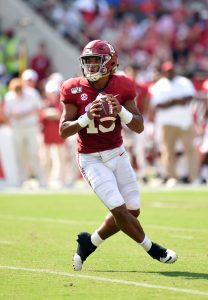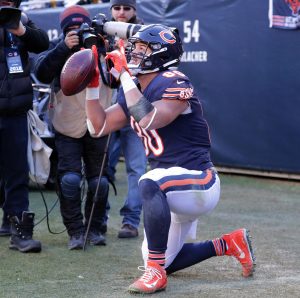Unlike in the NBA or MLB, players’ contracts in the NFL aren’t guaranteed by default. Typically, an NFL player will receive at least some guaranteed money when he signs a deal, but that money often comes in the form of contract bonuses, and in particular signing bonuses. While a player’s base salary, or P5 salary, will occasionally be guaranteed for a season or two, more often than not future seasons in that contract are fully non-guaranteed, allowing the team to escape the contract without much of a cap hit, particularly if the player’s bonus money was limited.
Take Vontaze Burfict for example. The linebacker inked a three-year, $33MM extension with the Bengals in 2017 with just $3.3MM in total guarantees. Rather than carrying Burfict at a $7.3MM cap figure in 2018, the Bengals released him in March, leaving just $1.8MM in dead money against $5.5MM in savings. At the time of signing, Burfict was ticketed to be the highest-paid 4-3 outside linebacker in the game on a per-year basis, but the Bengals were able to pull the plug and pay out only a portion of that commitment.
Signing bonuses, which are generally paid in one or two lump sums, are fairly straightforward forms of guaranteed money, but not all guaranteed money is created equal. We saw a prime example of that when Colin Kaepernick inked a long-term extension with the 49ers in 2014. When word of the agreement first broke, Kaepernick’s guaranteed money was reported to exceed $60MM+. However, upon learning the full details of the contract, we found that only about $13MM of that total was fully guaranteed, whereas another $48MM+ was guaranteed for injury only.
An injury-only guarantee is one of three types of guarantees that a team can write into a player’s contract that apply to his base salary in a given season. These guarantees are as follows:
- Guaranteed for injury: If a player suffers a football injury and cannot pass a physical administered by the team doctor, he would still be entitled to his full salary if the team were to release him. For a player with several future seasons guaranteed for injury only, it would take a career-ending injury for the team to be on the hook for all those future injury-only guaranteed salaries.
- Guaranteed for skill: The most subjective of the three, a player whose talents have significantly declined and is released for skill-related reasons (ie. another player beats him out for a roster spot) would still be entitled to his full salary if that salary is guaranteed for skill.
- Guaranteed for cap purposes: This form of guarantee ensures that a player who is released due to his team’s need to create cap room will still be entitled to his full salary.
A team can use a combination of these forms of guarantees, making a player’s salary guaranteed for injury and skill, for example. In the event that a player’s salary is guaranteed for injury, skill, and cap purposes, we’d refer to that salary as fully guaranteed, since the player would be eligible for his full salary regardless of the reason for his release.
As is the case with prorated bonuses, all future guaranteed salary owed to a player by a team is considered “dead money” and would accelerate onto the club’s current cap in the event of his release (over one or two years, depending on whether the cut happens after June 1). For the most part though, beyond the first year or two of a deal, that prorated signing bonus money is the only guaranteed figure remaining on the contract, which is why teams often don’t have qualms about releasing a player in the later years of his deal.

